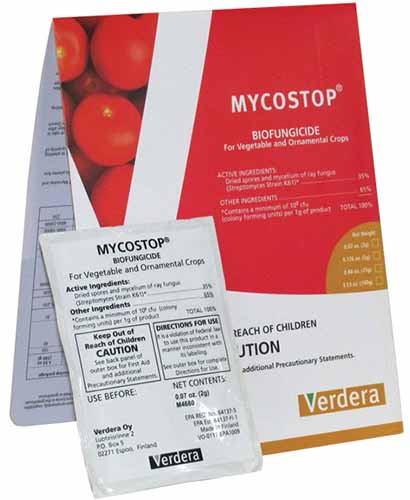Botrytis cinerea
There’s a lot to love about spring. How many poems wax lyrical about the flowers, the fragrance in the air, and the escape from the winter months? Who doesn’t love to head outside on the first warm days and bask in warmth?
One of the few things I don’t enjoy about spring is that it’s the time when botrytis, also known as gray mold, strikes. This disease also loves to make a late-season autumn comeback, spoiling pumpkin spice season.
You look at your roses expecting to see a big, colorful bunch of flowers, but instead, you see a brown, soggy mess.
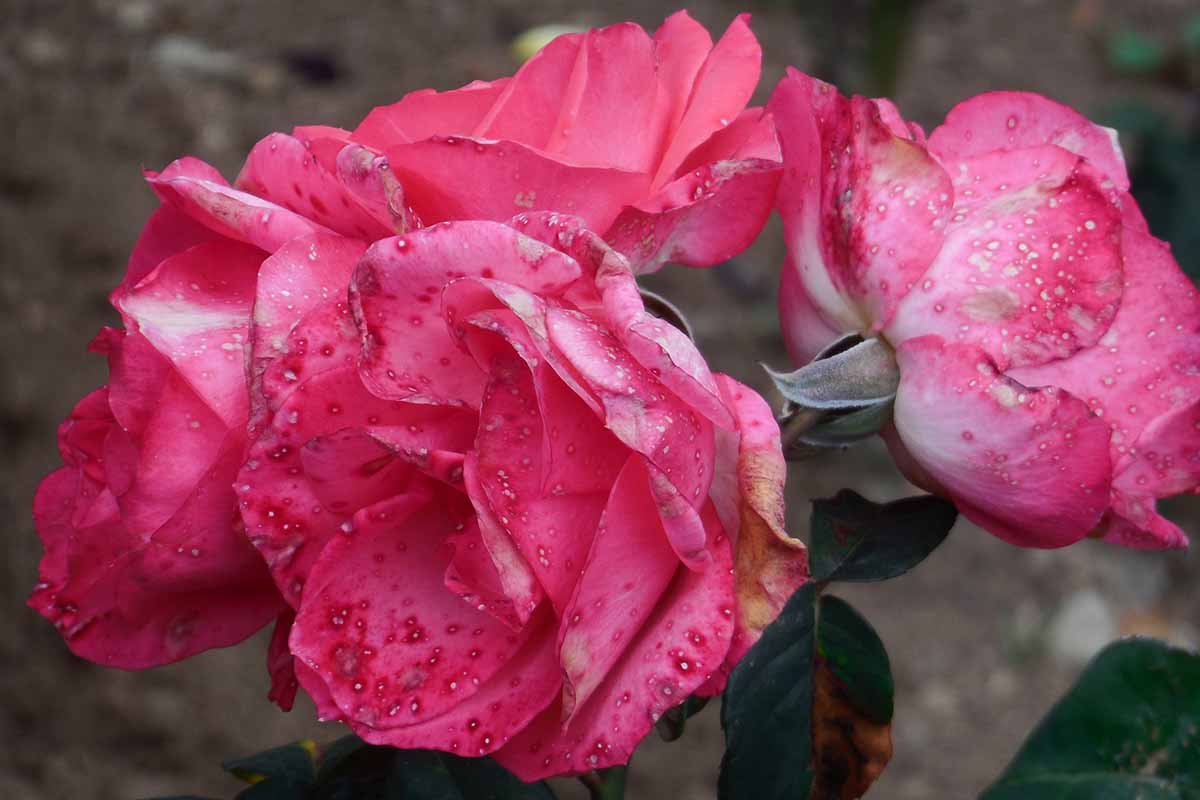
We link to vendors to help you find relevant products. If you buy from one of our links, we may earn a commission.
It’s not just home gardeners that face disappointing blossoms. Botrytis causes serious losses in the cut flower industry because it can destroy not just the blossoms on the plants but also those that have already been harvested.
Hybrid tea roses are particularly susceptible to this disease.
In this guide, we’re going to talk about how gray mold affects your roses, the life cycle of the pathogen, and what you can do to control and prevent infection.
What You’ll Learn
What Is Botrytis?
Botrytis is a fungal disease caused by the pathogen Botrytis cinerea, a species of necrotrophic fungus, which means that it kills its host rather than keeping it alive.
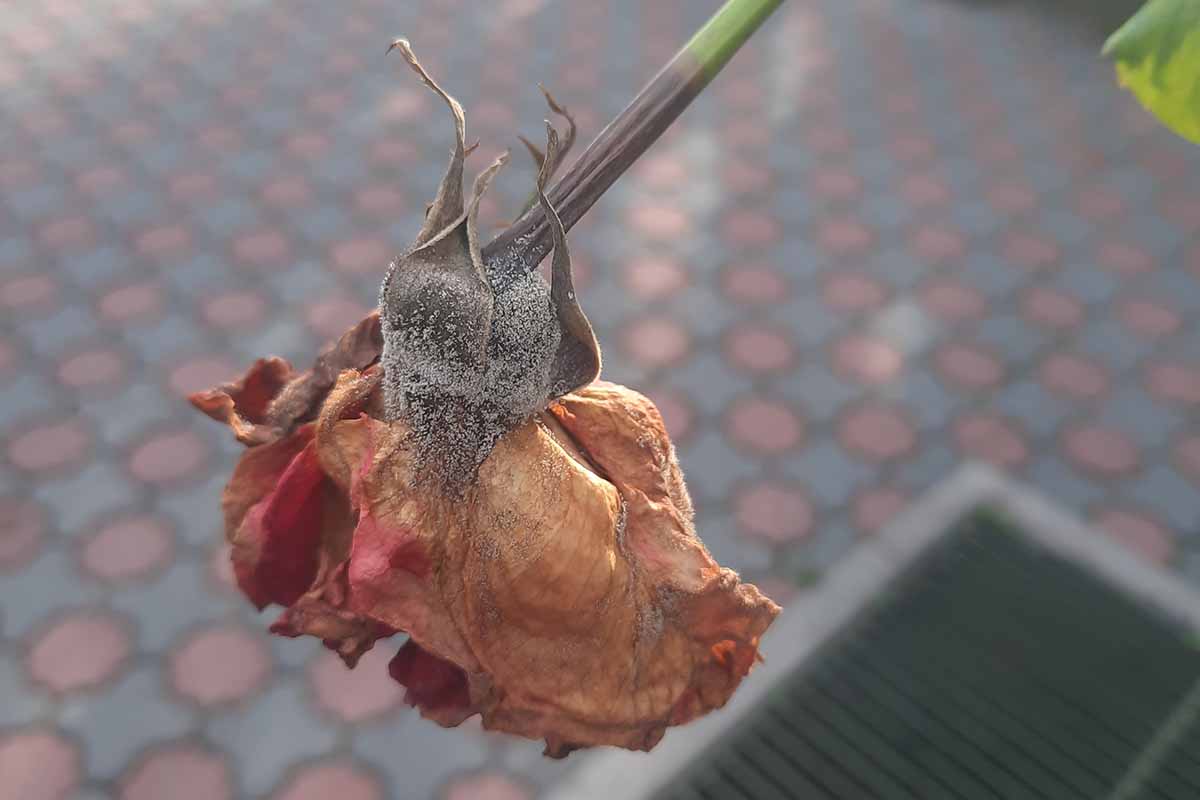
This pathogen loves roses, but it can also attack other garden plants, such as dahlias, gladiolus, grapevines, marigolds, peonies, strawberries, and tulips. In total, it can infect over 200 species.
It’s genetically plastic, which means it adapts easily. And that’s bad news because the pathogen can adapt to and become resistant to fungicides.
Identification
If the weather is always dry and hot in your region, don’t bother worrying about botrytis. This is a disease that requires cool, wet weather.
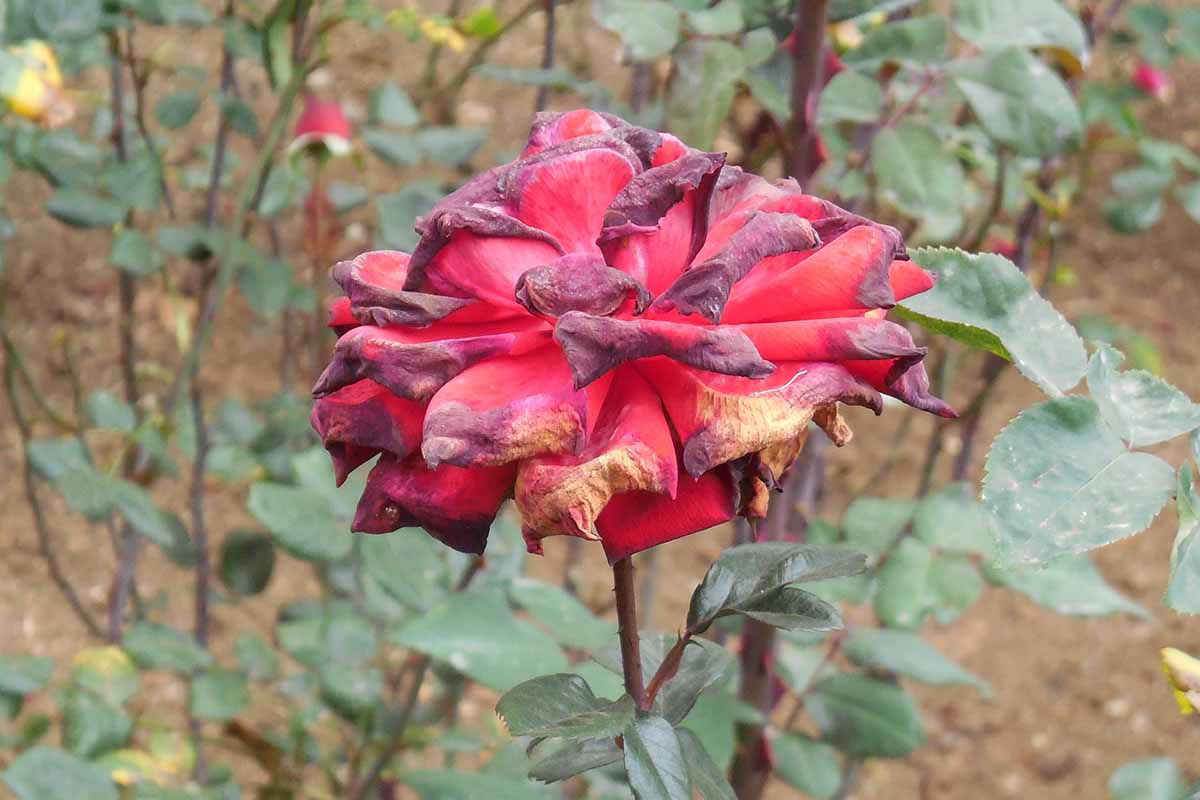
There are a few symptoms that make this disease obvious.
The flowers might be balled and fail to open, with or without a grayish-brown growth. Or they might be slightly open with lots of soggy, brown petals.
At the base of the flower you’ll typically see dark lesions, and these can also appear on the stems. In advanced cases, the canes may go dark and necrotic.
If the pathogen enters the cane through insect damage or pruning cuts, it might cause the entire cane to die. You’ll often see spores surrounding the area where the fungus entered the plant.
The most common symptom, though, is browning petals and buds covered with a gray fuzz.
Biology and Life Cycle
When temperatures are around 60 to 75°F and humidity is above 93 percent, the pathogen starts to reproduce.
It can survive in hotter weather, so long as there is adequate humidity, but it can’t reproduce as quickly. In the absence of high humidity, water droplets can serve as a carrier for the pathogen.
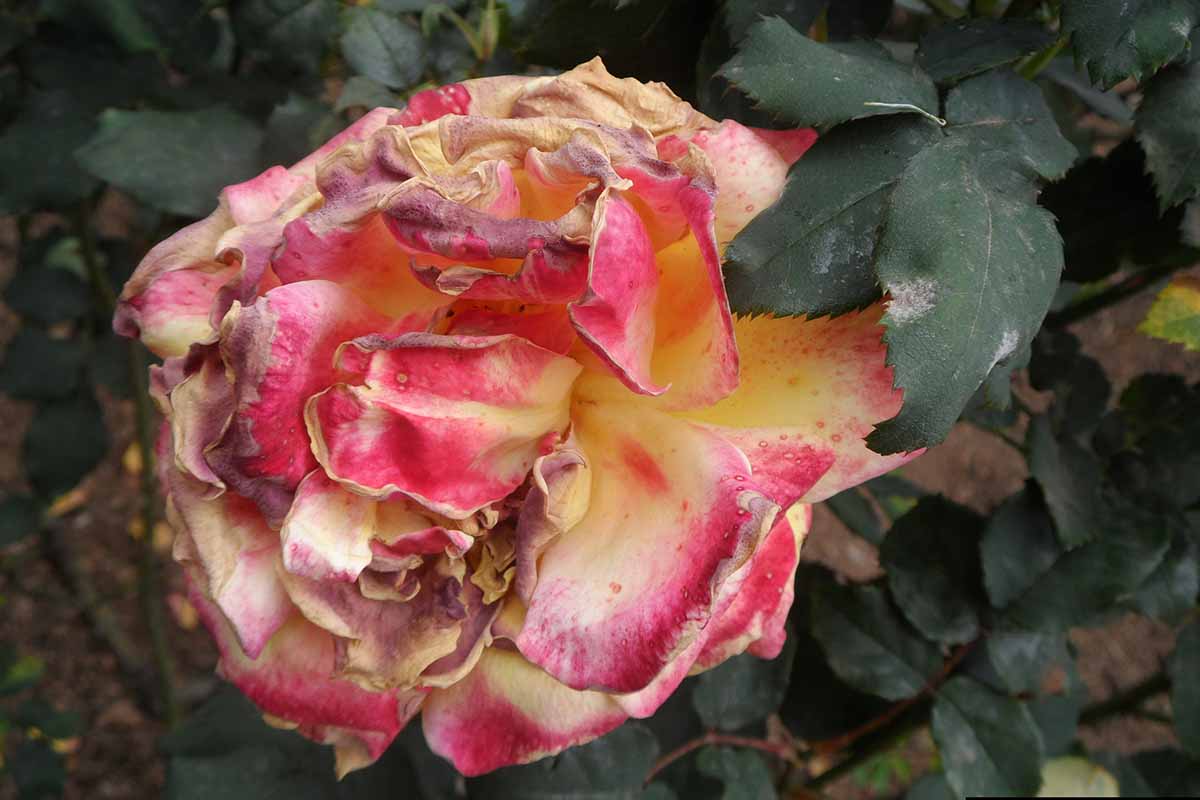
Greenhouses create particularly favorable conditions for an outbreak of this disease as they’re generally in this temperature range with plenty of humidity.
The fungus forms gray asexual spores – known as conidia – on hosts, as well as food reserves in the form of hardened mycelia aka hyphae called sclerotia.
When the temperature rises rapidly and humidity drops, the spores are released into the air and can travel to other nearby hosts.
These conditions often occur in the morning, so while the pathogen needs moisture to reproduce, it can spread even when conditions are temporarily dry.
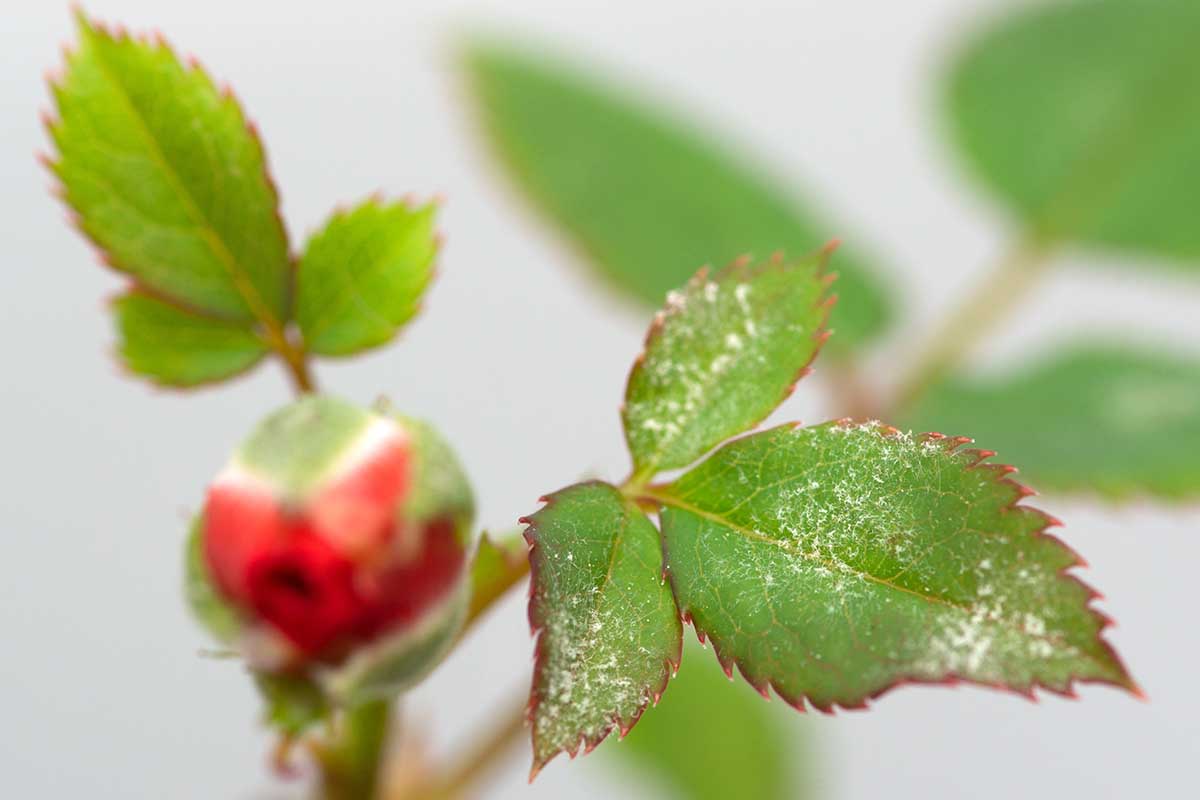
When conditions aren’t ideal, the fungus can survive on plant material, including bare root or dormant plants, or cut flowers, until the conditions are more optimal for reproduction. It can survive on garden detritus or the soil in resilient sclerotia.
The pathogen can be spread via air, on tools, clothing, and on plant material.
Organic Control Methods
When it comes to controlling the disease with commercial fungicide products, you’ll need to choose at least two – ideally three or four – to use on rotation to try and prevent fungicide resistance.
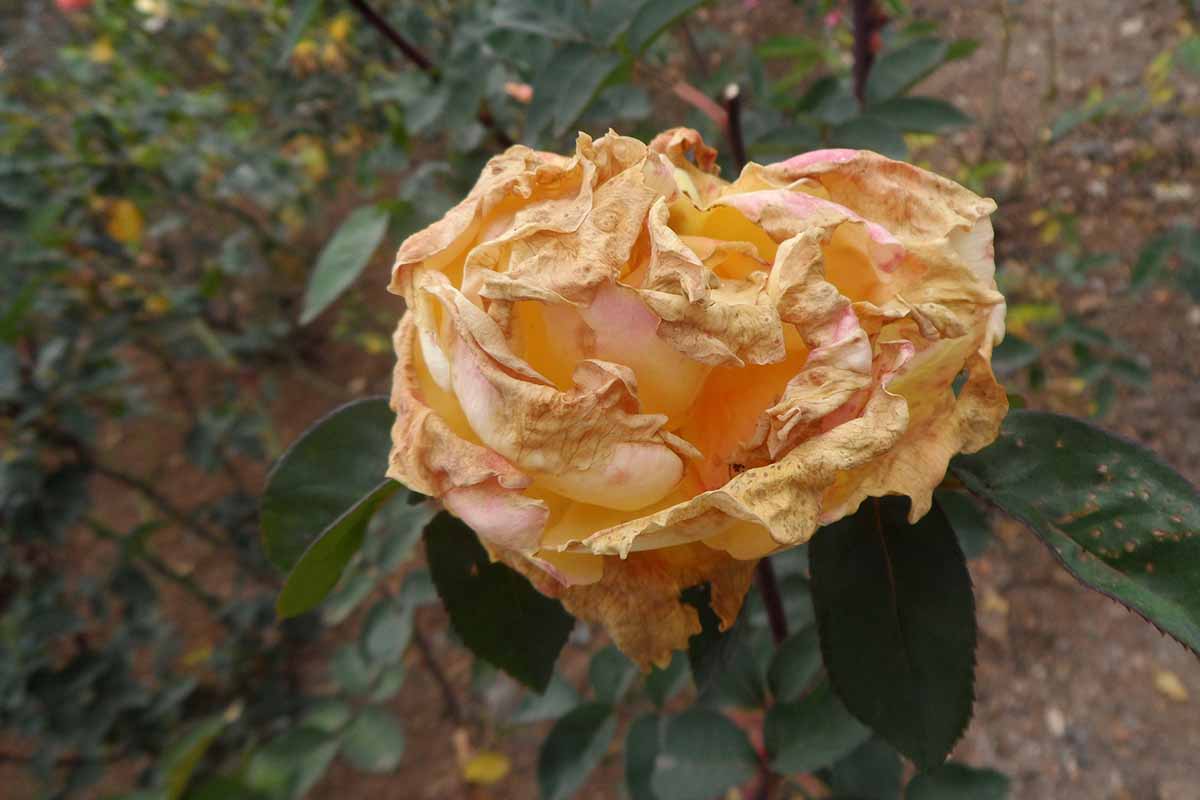
Adhere to the manufacturer’s recommended application rates and timing, but when it’s time to repeat the application, use a different product. Follow that with a different product, if you have it, and another after that.
At a minimum, you’ll need to rotate between two fungicide products.
Sadly, there aren’t any resistant cultivars available yet, but breeders are still working on it and maybe someday we’ll have a rose that is resistant to botrytis.
In the meantime, here’s how you can deal with the problem:
Cultural
If you are still watering your roses from overhead using sprinklers or a hose, stop immediately.
I can’t tell you how many problems you can avoid by watering at the soil level rather than on the foliage. And that includes botrytis blight.
You can also reduce the incidence of this disease by keeping your roses appropriately spaced and well pruned to increase airflow and reduce the ability of the fungus to reproduce.
Physical
The most important step in controlling this disease is to remove every symptomatic part of the plant. Yes, that might mean pruning off all the flowers and half the canes, but if you don’t do this, your rose will remain infected.
If you catch it early, you might only need to remove a few buds or stems. That’s why you should be scanning your plants every few days throughout the growing season, but especially when it’s cool and wet.
Clean up any plant debris around your roses and don’t allow even a single leaf to remain on the ground, as detritus can harbor the pathogen.
Biological
I have had multiple rose plants infected with botrytis, and every time, I rely on Mycostop to get rid of it.
So far, this product has always worked when used in rotation with other fungicides. Mycostop contains a bacteria found in sphagnum peat moss called Streptomyces strain K61.
You can pick up five- or 25-gram packets at Arbico Organics.
Mix it with water and only make enough to treat the number of roses you’re working with and saturate the plants completely.
Then, soak the soil underneath and around the plants to kill any pathogens in there, as well.
Refrigerate any leftover product because it doesn’t last long and you’ll need to use it several more times.
Another biological option is one of the products developed in recent years to target gray mold.
CEASE is a product formulated specifically for dealing with botrytis. It harnesses the beneficial bacteria Bacillus subtilis. It’s spendy, but effective.
You can also find CEASE available at Arbico Organics.
Fungicides
As I’ve mentioned, you absolutely must rotate your fungicides. If you decide to use Mycostop or CEASE, you’ll want to use one or both of the following products in between.
Bonide Fung-onil is an effective product that contains chlorothalonil, a broad spectrum chemical fungicide.

It’s available in a 16- and 32-ounce concentrate at many garden stores or via Amazon.
Copper fungicide is less effective, but it can work well in combination with other products. I wouldn’t rely on it alone, however.
I find that copper fungicide stops the disease from progressing but it doesn’t result in noticeably healthier growth like the other products on this list do.
Still, since we need to use several products, it’s worth including in your rotation.
Arbico Organics carries powdered copper fungicide in one- and four-pound containers.
Gray Mold Be Gone!
Botrytis is a beast of a disease. It’s a challenge to deal with because the causal pathogen is so adaptable.
But we have learned that rotating fungicide products to stay one step ahead of the pathogen is an effective treatment method. If you catch it early, you might be able to stop the disease and see new, healthy growth on your roses in just a month or two.
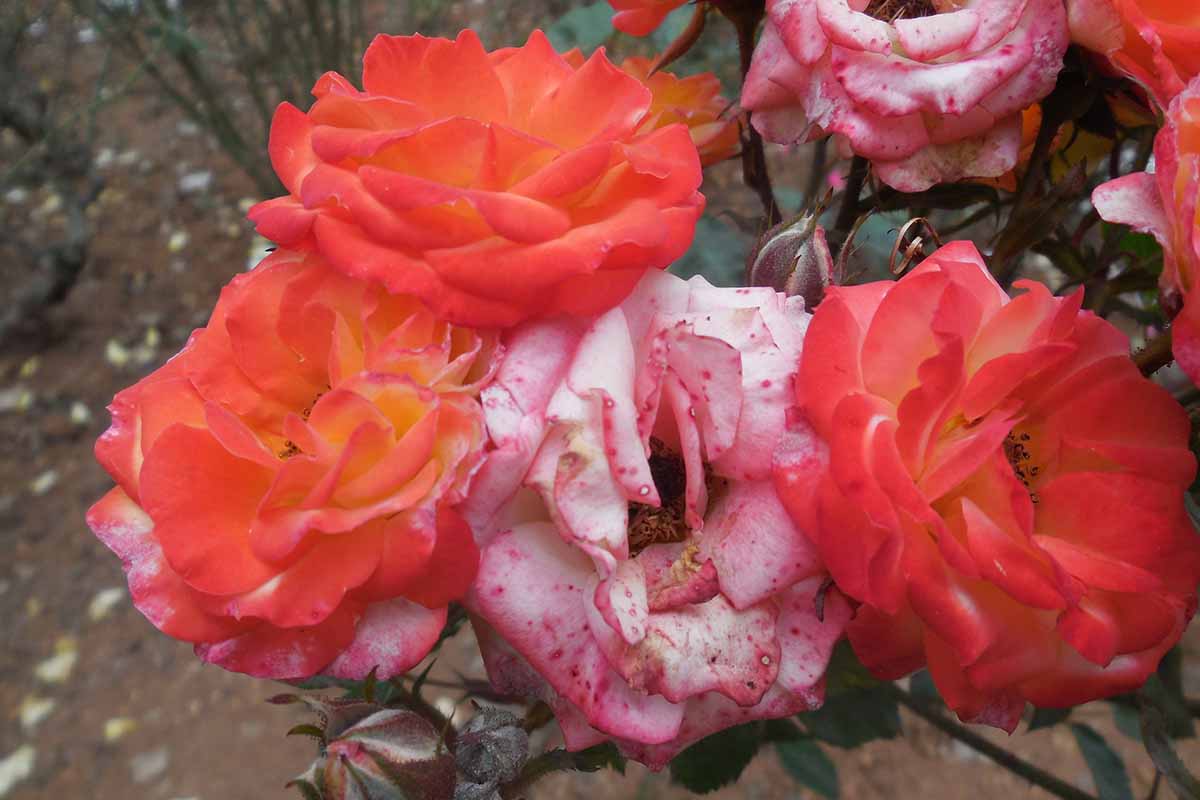
Be sure to prune out any symptomatic tissue because it won’t recover and it will allow the disease to spread.
What symptoms are you seeing on your roses? Are you unsure if it’s botrytis? Let us know what you’re dealing with in the comments and we’ll see if we can help.
And for more information about growing roses in your garden, check out these guides next:

